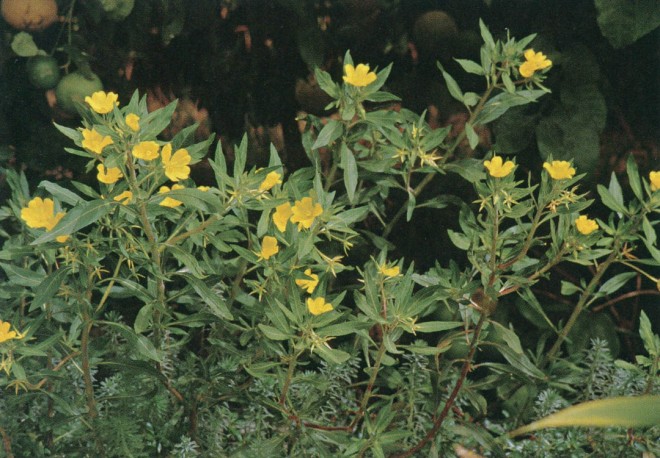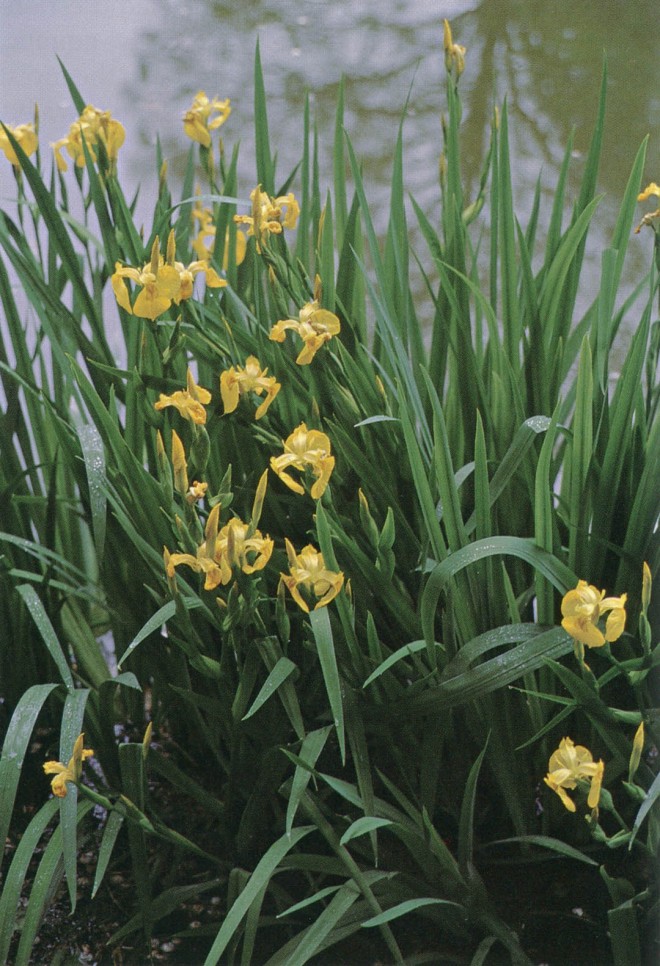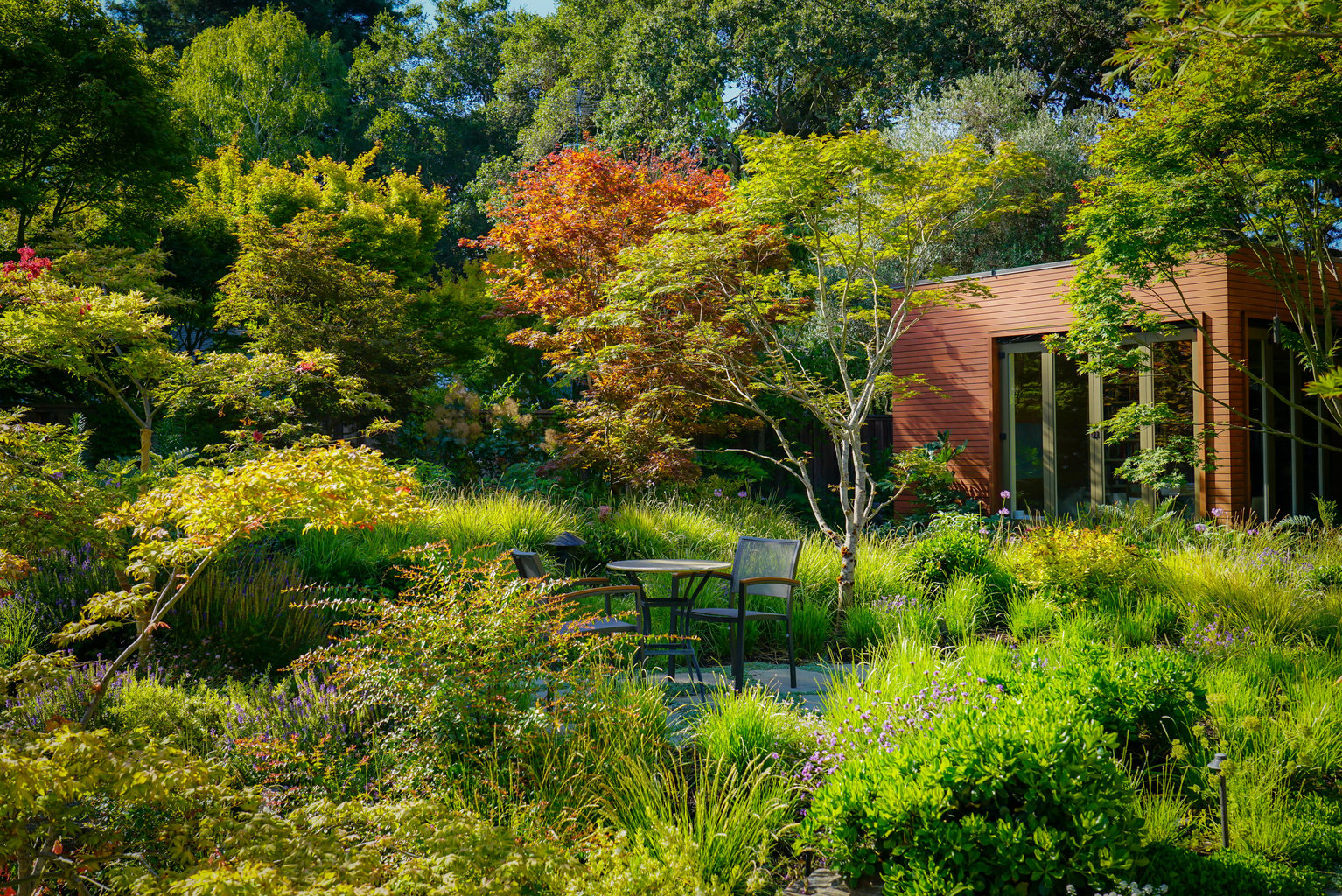
Aquatic Plants: Marginal Does Not Mean Trivial

Contributor

Aquatic plants add enormously to the life and beauty of your pool. But there are also practical reasons for introducing aquatic plants to your pool. They shade the surface of the water and reduce algae bloom; stabilize pond banks, pool bottoms, and shorelines; and provide nesting habitats for waterfowl. Marginal plants help to camouflage our less than perfect attempts to re-create nature by obscuring the sharp edges of concrete pools or fiberglass tubs. Submerged aquatics oxygenate the water and provide spawning protection and food for dish.
James van Sweden, Gardening With Water
It may be merely the allure of the pellucid waters, but one of the charms of a water garden is surely the stunning array of unusual plants that grow only in and around water. For a plant collector, this is indeed an all-but-irresistible enticement. Some have familiar forms, but many, because they are adapted to a watery world, approach the bizarre. You can choose to grow some of the world’s smallest ferns (Azolla and Salvinia) and minute flowering plants, such as the ubiquitous duckweed (Lemna) with leaves only a few millimeters in diameter, or select a water lily (Victoria reginae) with leaves more than six feet across.

There are a few plant families whose members only occur in fresh water lakes and ponds. The water lily and lotus families (Nymphaeaceae and Nelumbonaceae) are obvious and well-known ones, but a number of other interesting families are worth considering. Two popular pond plants, the floating water-hyacinth (Eichornia crassipes) and stately blue-pickerel-weed (Pontederia cordata), are the most famous (or infamous) in the Pontederiaceae, but all members of that family are restricted to watery habitats. The arrowhead family (Alismataceae) is also comprised exclusively of aquatic plants. Many species of arrowhead or wapato (Sagittaria) are grown commercially for use in water gardens. Texas mud baby or creeping burrhead (Echinodorus cordifolius) has similar foliage and belongs in this family, along with the water plantains (Alisma).
The loosestrife family (Lythraceae) is primarily subtropical or tropical and woody; however, a few genera occur in temperate areas of the world and are often aquatic or semi-aquatic. The entire genus Rotala is aquatic, some species living completely submerged and others creeping out onto the muddy verge. A close relative is purple loosestrife (Lythrum salicaria), a lovely plant, native to Europe, that has become a noxious weed of wetlands in northeastern United States and elsewhere. Flowering rush (Butomus umbellatus), the only genus in the Butomaceae, grows at the edges of rivers, where the rushing waters may nearly submerge the plant during spring floods. The Saururaceae has only four genera, three of them found exclusively in boggy habitats. Houttuynia cordata is probably better known in its variegated form, ‘Chameleon’ (syn. ‘Variegata’); both can be invasive in a some situations. A close relative, lizard’s tale (Saururus cernuus), can also be found in nurseries.

Swamp Dwellers
A few genera in a wide range of families are restricted to swamps, meadows and other damp places. Representing the arrowroot family (Marantaceae) are powdery alligator-flag (Thalia dealbata) and bent alligator-flag (T. geniculata), the largest members of the family; native to southeastern North America and tropical America, they prefer to grow in water up to six inches deep. Their spatulate leaves are held on tall stems, three feet or more in length; the inflorescences rise at least another foot above them to present their delicate violet flowers. In the evening primrose family (Onagraceae) is Ludwigia whose species inhabit the muddy banks of lakes and rivers all over the world. A diminutive genus in the carrot family (Apiaceae), pennywort (Hydrocotyle) also creeps about at the edge of the water; it can be invasive in some situations. Water hyssop (Bacopa monnieri) is a close relative of the monkey flower in the snapdragon family (Scrophulariaceae); its low-growing stems form mats that can trail out across the surface of the water from the boggy margin.
Given the huge number of genera and species in the sunflower family (Asteraceae), it should come as no surprise that it, too, is represented in aquatic habitats. Brassbuttons (Cotula coronopifolia) has colonized meadows and bogs in its native South Africa as well as invading Europe and parts of the US. The buttercup family (Ranunculaceae) offers marsh marigold (Caltha palustris) with cheery yellow flowers appearing in marshy areas in earliest spring and followed by large, cabbagey leaves. Water forget-me-not (Myostis scirpoides), in the borage family (Boraginaceae), offers drifts of tiny blue flowers in spring. One of the most striking genera among the amaryllids is Crinum, with large white or pink flowers above bold strap-like leaves; many of its species live exclusively in the shallows and seeps in subtropical and tropical areas of the world.
Many ferns favor moist environments, but one genus has a particular affinity for wet feet. Scarcely resembling a typical fern is the genus Marsilea with sixty to seventy species worldwide in warm areas, and all of them aquatic to some degree; all have characteristic fronds shaped like four-leafed-clovers. Their reproductive sporocarps are hard capsules born on separate stems. If growing in shallow water at pond’s edge, the fronds are held above the surface; rhizomes that invade deeper water will support leaves floating on the surface.

Various aquatic plants common as ornamentals have a history of culinary usage. Taro (Colocasia esculenta) is the plant used to make poi in Polynesia. The large, starch-filled stems are harvested from flooded fields and processed (the raw flesh is not to be eaten) for consumption in many countries. Cultivars with variegated and variously colored leaves and stems are now sold to grace our water gardens. Chinese water-chestnut (Eleocharis dulcis) produces tubers below the soil surface, much like potatoes. The above ground portions of the plant are handsome and valued in their own right. Though they are deciduous, the grassy green stems grace the bog for many months before turning a lovely autumn bronze and only need cutting back for a short winter rest. Watercress (Nasturtium aquaticum) is, true to its name, also a pond plant; like others in the mustard family (Brassicaceae), its foliage adds a tangy taste to salads and sandwiches.

Rushes and Sedges
Any roundup of aquatic plants would be incomplete without the rushes and sedges. Most grow at the edge of a pond in shallow water; a few of the most robust species will thrive at depths of more than a foot. Though they all appear similar to the untrained eye and have such small floral parts that it is a challenge to identify them that way, there is a folk mnemonic that can help sort out the majority of them. It goes “sedges have edges and rushes are round; grasses are hollow from stem to the ground.” The sedge family (Cyperaceae) includes three well-known genera, Carex, Cyperus, and Scirpus, and a couple of smaller, less familiar ones, Rhynchospora and Baumea. Most Carex grow from six inches to two feet or so in height and form dense clumps of grass-like foliage. The range of colors includes bronze (almost orange), every shade of green, and blue gray. You have to be fairly observant to see the flowers, which are tiny and cream colored on tight spikes that are usually shorter than the leaves.
Cyperus species vary in size from the foot-tall C. haspan to Egyptian paper reed (C. papyrus), which towers to fifteen feet under ideal conditions. All are surmounted by a burst of flowers in an inflorescence that would vie with any cheerleaders’ pom-poms. Depending on the relative size of the narrow bracts and flower stalks in each umbel, these pom-poms may be tight and stiff or may fan out gracefully. The fine texture of Scirpus cernuus gives it the common name of fiber optic plant; it is another good choice for shallow water. Within the genus Scirpus, but at the other end of the size spectrum, are the bullrushes, suitable only for large ponds. One member of the family with a little more panache is star grass (Rhynchospora colorata). Its inflorescences have only a few floral bracts, but they are papery white and frame the minute flowers in an appealing star burst. Baumea rubiginosa ‘Variegata’ is notable only for its narrow leaves striped with yellow.
Juncus is the primary genus in the rush family (Juncaceae). All species form tufts of slender, linear leaves, round in cross section, that narrow to a soft point. Current garden favorites include J. ‘Carmans Japan’ and J. patens ‘Elk Blue’, but if you like the weird and wonderful, corkscrew rush (J. effusus f. spiralis) has leaves that twist like its namesake.
Related to the rushes and sedges are the cattails (Typha) in the Typhaceae. They have characteristically flattened leaf blades and familiar drumstick flower spikes; they are seldom found out of water. Among the “hollow-stemmed” grasses, there are a few that favor a watery habitat. The wild rices (Zizania) are well-know American natives, best adapted to the northern states. Giant reedstem (Arundo donax) is a tall, bamboo-like grass that can become a noxious weed if allowed to escape.
Another family with hollow stems is the Equisetaceae. Horsetails or scouring rushes (Equisetum) do have hollow stems, but there any similarity to grasses ends. Leaves, with triangular tips, are fused to form a distinctive sheath around the stem at each node. At the top of the stems are cone-like structures called strobili containing the spores by which these plants reproduce. If not controlled, horsetails can also be invasive and nearly impossible to eliminate from the garden because of their vigorous and long-lasting rhizomes and associated reproductive tubers. Bearing a strong resemblance to horsetails are some species of the Southern Hemisphere family called Restionaceae. Though none are exclusively aquatic, many, such as Elegia capensis, thrive in the moist soil at pond’s edge or along a drainage swale.

Floral Abundance
Many of the plants discussed to this point are grown for their interesting foliage, their small floral displays playing a somewhat secondary role to leaves and stems. There are many showy flowering plants for the edge of a water garden, not the least of which are the irises. There are four primary species that enjoy damp situations. Yellow flag iris (Iris pseudacorus) is one of the largest, with robust clumps of leaves up to five feet high, best suited to large ponds where it can be grown in big pots. Iris laevigata offers fine selections whose flowers span the range of blue tones and often sport variegated leaves for added interest.
By far the species with the most cultivated diversity is Japanese iris (Iris ensata). It also has the finest foliage, with narrow leaves in upright clumps; the showy flowers seem to float above a column of green. Unlike other iris flowers, the broad falls of Japanese iris are held almost horizontally with only the outermost edge recurving downward. They come in all shades of deep purple and royal blue as well as pale pink, mauve, and purest white. Many of these cultivars have contrastingly colored veins, streaks, or flecks to enhance the presentation. The erect standards may be yellow at the base or throughout, thus adding another hue to the palette. Selections and hybrids have been developed for centuries, mainly in Japan, where many more are available than in our markets here.
American hybridizers are beginning to catch up to the Japanese with a growing list of hybrid Louisiana iris for the water garden. The coppery red flowers of Iris fulva, native to the southern states, have been the jumping off point for a myriad of new colors and an extension of the blooming season. These beauties now come in bold and pastel shades of pink, yellow, blue, and purple, as well as white. There are also bi-colored blossoms whose standards display a different hue than the falls. Three more North American iris species are available for a boggy or marshy situation in the garden: I. brevicaulis, I. versicolor, and I. virginica.
Also in the iris family is the Western native yellow-eyed grass (Sisyrinchium californicum) with dainty iris-shaped flowers; it thrives in moist meadows. The unrelated but similar sweet flags, Acorus calamus and A. gramineus are grown for their characteristic fans of iris-like leaves; placed either in the Araceae or their own family, the Acoraceae, they thrive at pond’s edge.
Among the showiest of flowering water plants is Canna. Hybridized from several tropical American species, all native to stream and pond margins, these perennials offer bold, often colorful foliage in addition to flowers. Among recent selections are single-flowered cultivars with narrower petals than many of the long-familiar ones. Four released by Longwood Gardens in the 1980s have become favorites: ‘Taney’ (orange), ‘Erebus’ (pink), ‘Endeavor’ (red), and ‘Ra’ (yellow). Most of the cannas available, whether species or hybrids, will probably thrive at the edge of the water garden if you don’t submerge their crowns too deeply.
Native to wet places in Southern Africa, the familiar, white-flowered calla (Zantedeschia aethiopica) is also a prime candidate for the edge of your pond. There are a number of interesting cultivars of this perennial. One of the best known is Z. ‘Green Goddess’ whose white inflorescence has an extended tip streaked and dyed as green as the leaves. Look for dwarf varieties if your pond is small. Be forewarned that callas may naturalize along wetland margins in areas with mild winters.
A few other species can create a splash (of color, that is) in shallow water. The cardinal flower (Lobelia cardinalis) and its blue-flowered cousin, L. syphilitica, are favorites. The bog sage (Salvia uliginosa) offers tall stems of pale blue flowers. Many species of Lysimachia prefer moist situations. Primula japonica and P. florindae provide weeks of color in spring at the edge of ponds or seasonal streams. With so many exciting aquatic plants to choose from, you may find that one pond is just not enough to satisfy the collecting impulse.
Share:
Social Media
Garden Futurist Podcast
Most Popular
Videos
Topics
Related Posts

Low Maintenance Gardens – Better for Pollinators and People
Autumn 2022 “I come out every day. It’s therapy, my meditation.” Janet’s young garden transformed from overgrown, invasive plants to mostly natives. The dailiness of

Invasive Plants Are Still Being Sold: Preventing Noxious Weeds in Your Landscape
Autumn 2022 With so many beautiful ornamental plant species and cultivars throughout California and the Pacific Northwest, how do you decide which ones to include

Garden Design in Steppe with Transforming Landscapes with Garden Futurist Emmanuel Didier
Summer 2022 Listen to full Garden Futurist: Episode XVII podcast here. Emmanuel Didier, Principal and Creative Director at Didier Design Studio is a leading figure

Seslerias: Versatile Groundcover Meadow Grasses
Summer 2022 Without question, the most beautiful and versatile of all the groundcover meadow grasses are the moor grasses (Sesleria). Moor grasses tick off all











Responses